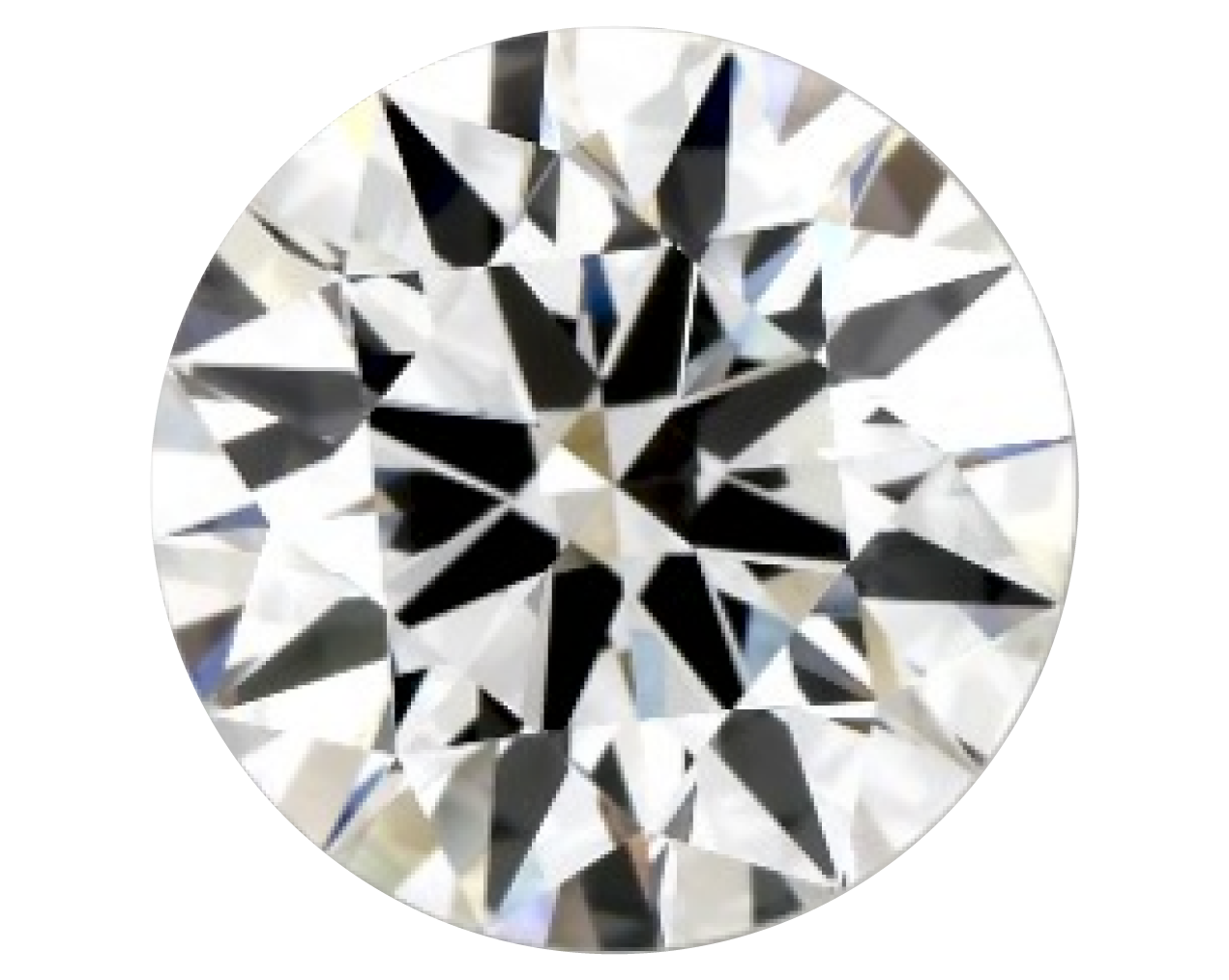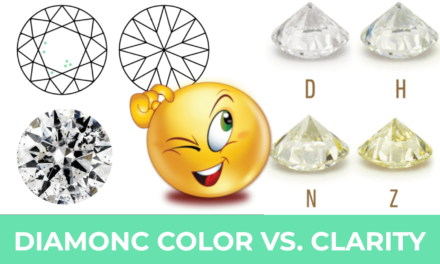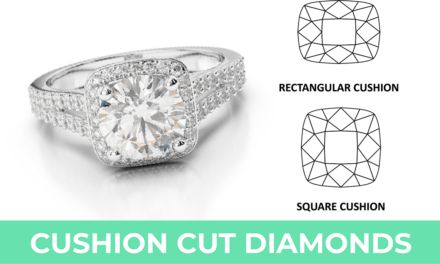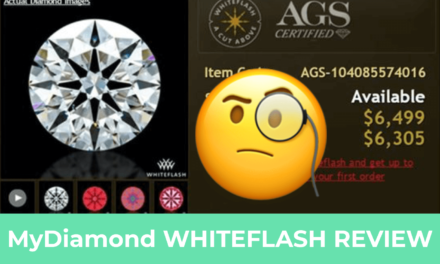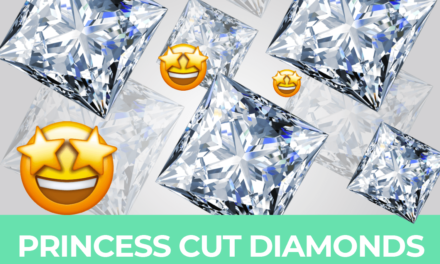My website is reader-supported. Buying through links on my site may result in me earning a CUSTOMER REFERRAL FEE at no extra cost to you.
Check out the latest deals at our top diamond vendor choice: James Allen
All You Need to Know About VVS1 Diamonds
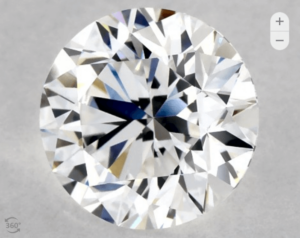
VVS1 Round Diamond, 1.06ct
Have you been considering purchasing a VVS1 diamond for your engagement ring? If so, you may be wondering if it is the right choice. In this blog post, we will look at some of the benefits of opting for a VVS1 diamond and help you decide if this is the best option for you.
Content overview
VVS1 Diamond Summary
- VVS1 stands for very, very slightly included indicating that the diamond will have no inclusions or blemishes visible to the naked eye
- VVS diamonds are nearly perfect, scarce, and therefore quite pricy
- VVS diamonds might not be worth the premium price, and you can save a significant amount of money when choosing lower clarity eye-clean diamonds
- The only time VVS1 diamonds might be worth it is when purchasing an enormous diamond
- The best places to shop for VVS1 or lower clarity grade diamonds are James Allen and Blue Nile
What is a VVS1 diamond?
VVS stands for very, very slightly included diamonds. There are two types of VVS diamonds, VVS1 and VVS2.
VVS1 diamonds are the highest rated VVS diamonds. VVS2 diamonds are also considered VVS diamonds but represent a lower grade.
VVS diamonds are among the best of the best, comprising only 1% of the diamonds in the world’s diamonds.
The diamond’s beauty of a VVS diamond is truly stunning. They’re nearly perfect because it is challenging to see the inclusion(s) when the stone is under magnification. Only trained experts can see such minute inclusions in VVS1 and VVS2 diamonds.
If you are a perfectionist and only want the best of the best for your diamond engagement ring, this might be the right choice, and in the following, I’ll share tips and tricks for when it comes to shopping for a VVS1 diamond. However, it’s not necessary to shop for a diamond in the premium range in most cases. And choosing a lower clarity grade can save you quite some money.
How do VVS1 diamonds compare to other clarity grades?
Diamond clarity refers to the presence (or lack thereof) of inclusions or blemishes in a diamond. The Gemological Institute of America (GIA) has developed a grading system that accounts for the number, location, size, color, and type of inclusions or blemishes present in a diamond. There are eleven clarity grades in total.
The GIA diamond clarity scale ranges from flawless (FL) diamonds to diamonds containing numerous flaws visible to the naked eye (so-called I-clarity-diamonds).
As you can see below, a VVS1 diamond has one of the best clarity grades there are, only surpassed by internally flawless and flawless diamonds.
You can see the GIA diamond clarity scale below:
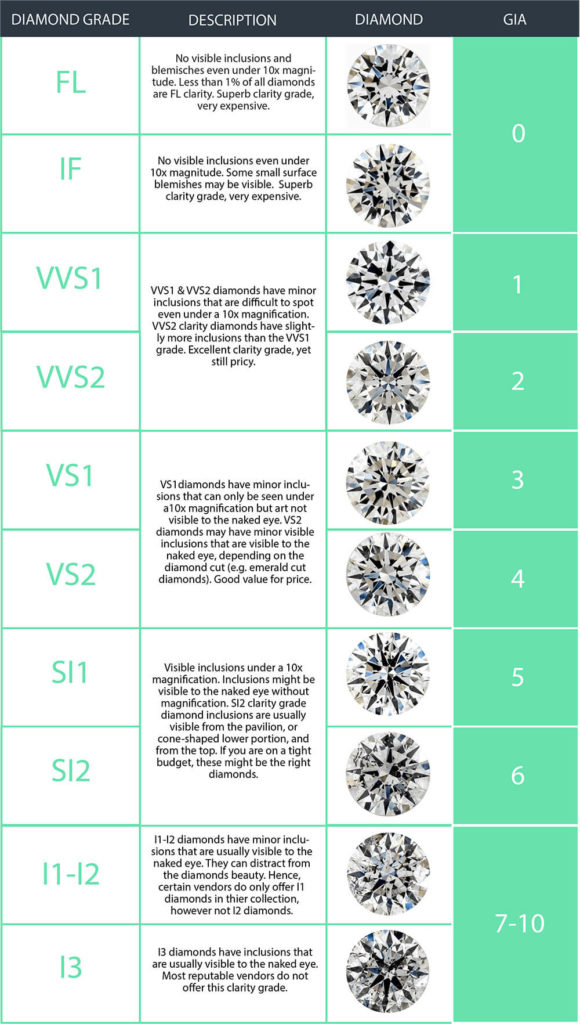
- FL – Flawless diamond or FL diamond, no visible inclusions and blemishes even under 10x magnitude; these are 100% eye clean diamonds and very rare diamonds
- IF – Internally flawless, no visible inclusions but maybe some small surface blemishes
- VVS1 and VVS2 – Very very slightly included; those diamonds are close to perfect and tend to have only tiny inclusions that are difficult to spot even under a 10x magnification
- VS1 and VS2 – Very slightly included; minor inclusions are visible under 10x magnification but are not visible to the naked eye
- SI1 and SI2 – Slightly included, inclusions are barely visible naked eye
- I1 and I2 – Included diamonds, minor inclusions are typically visible to the naked eye
- I3 – Inclusions are almost always visible without magnification
It is important to note that diamond clarity is just one factor determining a diamond’s quality. Other factors include cut, color, and carat weight.
How much do VVS1 diamonds cost?
The answer depends not only on the clarity grade but also on the other three Cs, including the carat weight, cut, and color. The higher the stone is graded on all these factors, the higher the price.
On average, though, you can expect to pay anywhere from $4,000 to $13,000 for a one-carat diamond in the near-colorless range with an ideal cut and a VVS1 clarity grade.
That said, let’s take a look at the prices of a couple of 1-carat VVS1 diamonds that are currently on the market: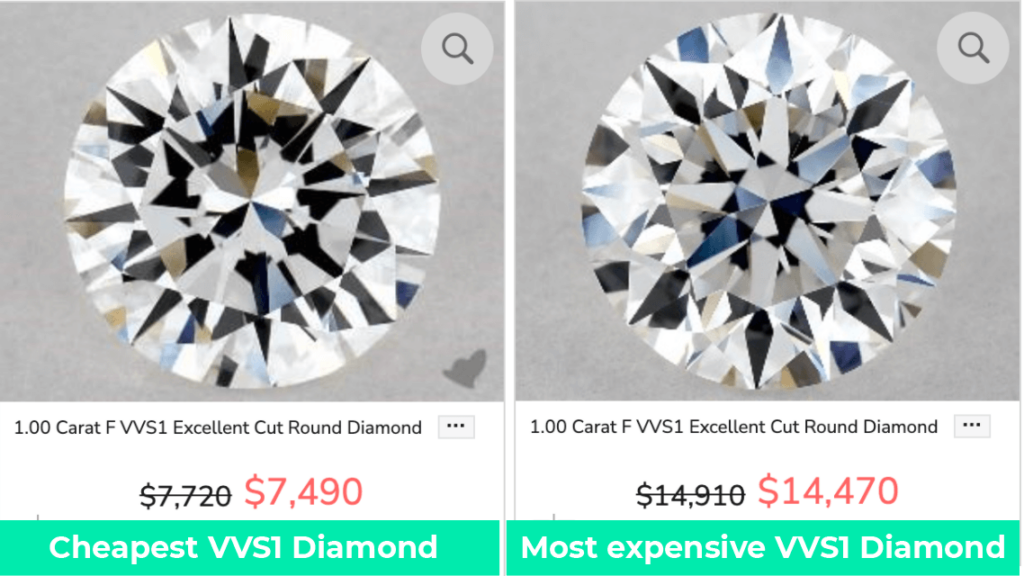
As a comparison, here are some price points for VVS2 diamonds (with all parameters equal to the previous diamonds):
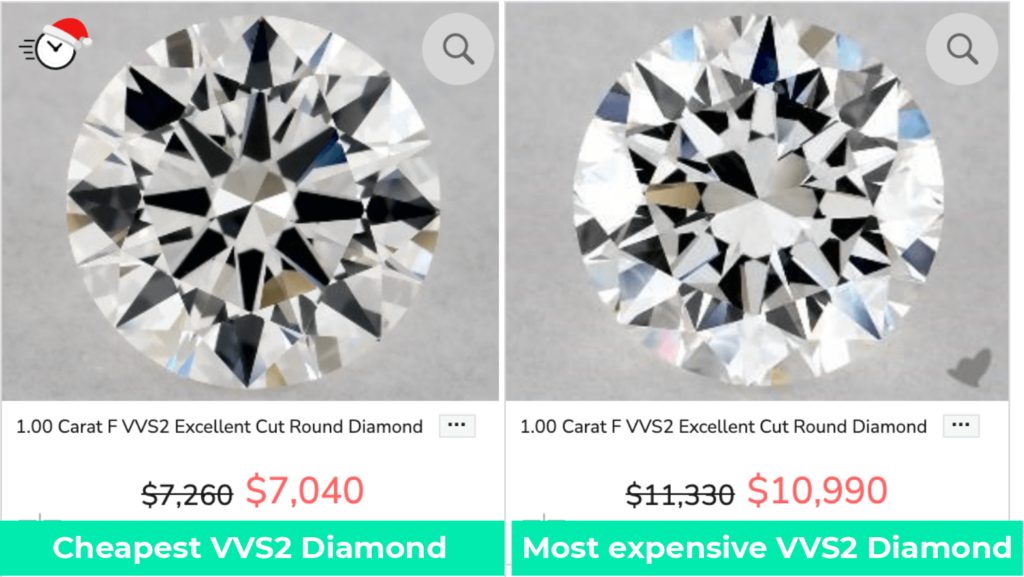
Below, I put together a chart that outlines how the clarity grades affects the price of diamonds:
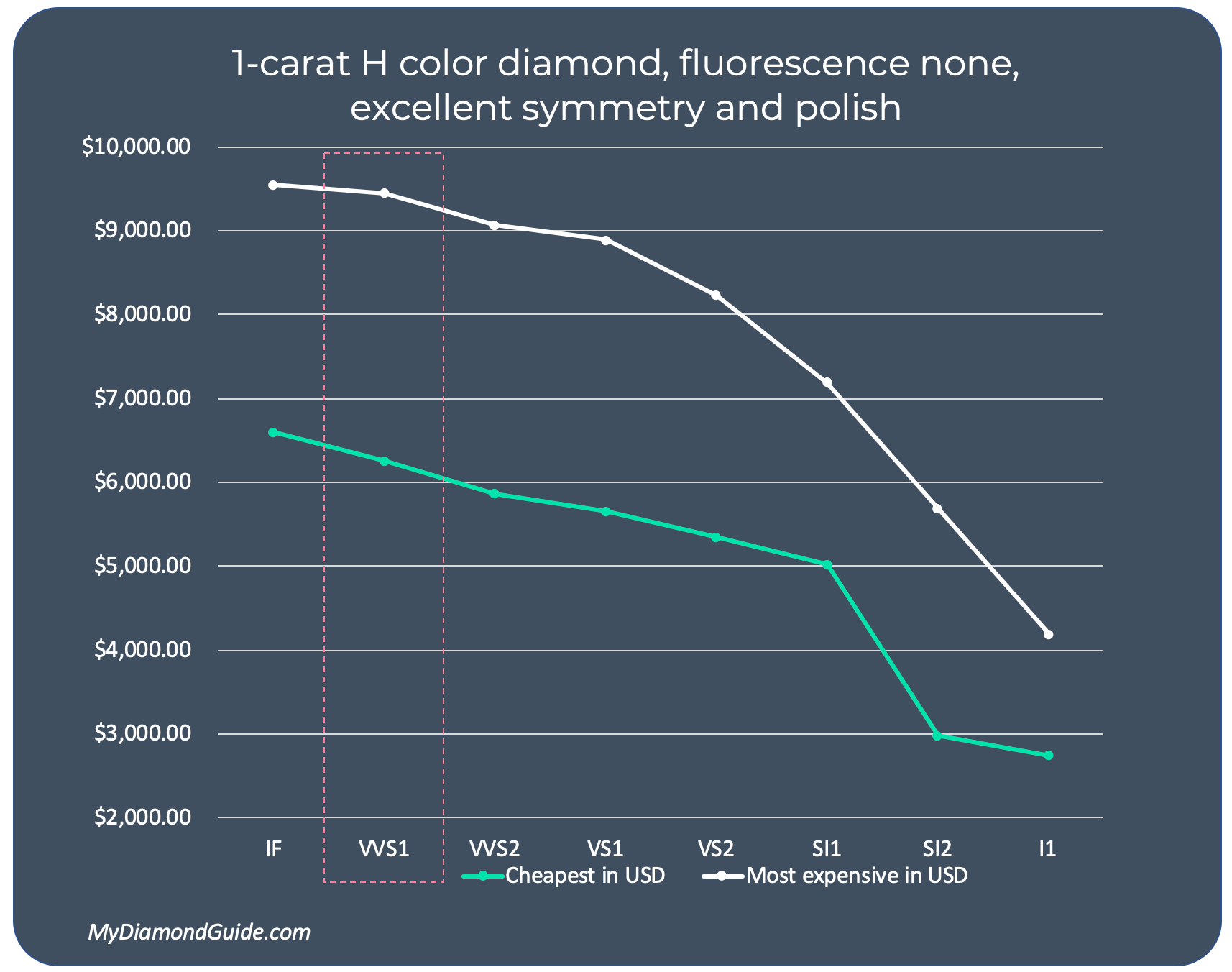
Since VVS1 clarity diamonds are near perfect, they are extremely rare and thus cost more than most other clarity diamonds.
However, without high magnification, neither a layperson nor a trained grader will be able to tell VVS1 diamonds apart from higher grades.
Additionally, as mentioned in a previous blog post, cut is king. Hence, you should always make sure to prioritize well-cut diamonds over high clarity diamonds, especially when you are considering buying a styled solitaire or tension setting where the diamond is very visible.
Why you might want to consider lower clarity grades for engagement rings
For most people shopping for an engagement ring, the goal is to purchase the best diamond for the lowest possible price.
The good news is that you can go down in clarity grade and still find an eye clean diamond (i.e., no inclusions or blemishes are visible to the naked eye).
An eye-clean Very Slightly Included or VS2 diamond is still beautiful and offers you the most for your money! You could go even lower if you can find a way to conceal the flaw under a prong of the ring setting.
In some cases, you can even find a diamond of a lower grade that looks more beautiful than a VVs1 diamond, all other parameters being equal. See for yourself below:
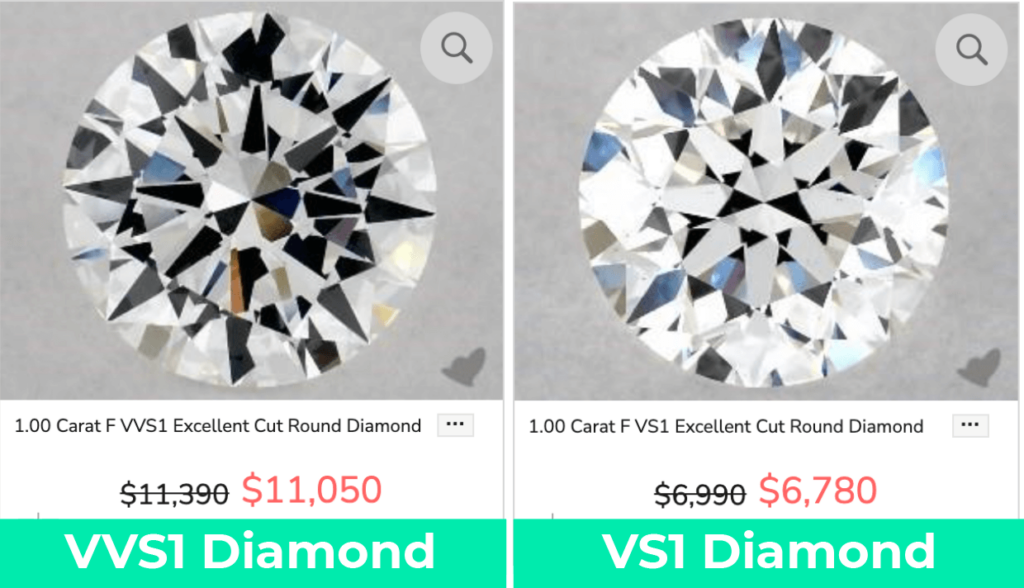
I don’t know about you, but I prefer the VS1 diamond over the VVS1 clarity diamond.
Take a look at this 1ct VS1 diamond with excellent cut quality that’s eye-clean. Or consider this stunning 1.06ct VS2 eye-clean diamond.
It’s unlikely that your fiancé has a gemologist as friends. No one who sees her ring will take out a 10x loupe to examine the diamond. Why would you want to spend that much more money on a VVS1 when you can get an eye-clean VS2?
Also, the optimal diamond clarity grade varies with different carat weights, cut quality, and shapes. A higher carat weight or larger diamond requires a higher clarity grade than smaller diamonds.
Furthermore, most shapes that belong to the so-called fancy shapes, such as an emerald cut diamond, require better clarity grades.
Where to Shop for VVS1 Diamonds
Since clarity is an important aspect of a diamond, being one of the 4Cs, you need to see the gem before buying it.
Our top recommendation for shopping online for a diamond is James Allen or Blue Nile. They have very advanced technology that lets you see inside the diamonds you’re considering. Even though this is not in person, you will view diamonds under 40x magnification with a full 360° view.
From there, you can compare diamonds and even see them on the ring settings you like best. In addition, James Allen offers a free 30-day return and has matched sets (in case you are already thinking of “wedding rings”).
Below I listed a couple of loose diamonds at an exceptional price within the VVS clarity range:
Conclusion
You may not be able to afford the perfect diamond, but you definitely can find a budget friendly seemingly perfect diamond. In most cases, it is not necessary to purchase a nearly perfect VVS1 diamond, instead opt for lower clarity graded diamonds and you’ll have more money to spend on the cut quality.
While diamond color and clarity are two very important factors, don’t forget that the cut is the most important out of the four Cs. Cut is king!
Diamond Quiz
Can you tell the difference?
One of the two diamonds below has a clarity grade of VVS1, the other one of VS1. Can you tell which one has the lower clarity grade and costs $1000 less?

